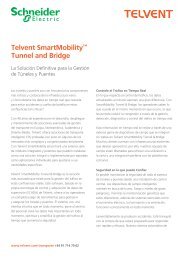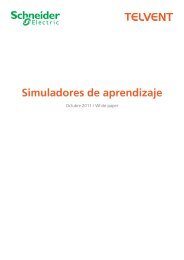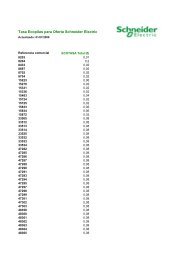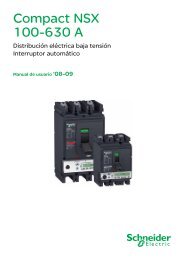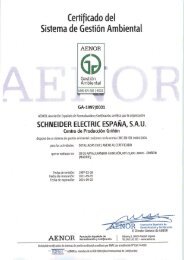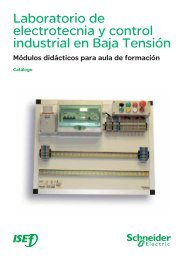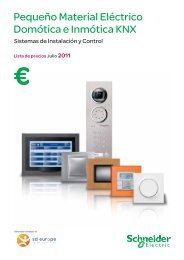Example of installation & commissioning guide
Example of installation & commissioning guide
Example of installation & commissioning guide
- No tags were found...
You also want an ePaper? Increase the reach of your titles
YUMPU automatically turns print PDFs into web optimized ePapers that Google loves.
ConnectionCable routingConnecting the auxiliarycircuits■ cabletraysThe auxiliary cables are routed on metal cabletrays. Theymust be flanged according to proper procedures.■ trunkingsThe following rules must be complied with in traditionaltrunkings:❑ trunking must be secured at least every 600 mm❑ trunking must not be filled to more than 70% <strong>of</strong> capacity❑ cables must not be tied inside trunking❑ trunking must be secured using plastic screws to avoidany risk <strong>of</strong> damaging cables❑ avoid routing auxiliary cables directly in contact with powercables.A: trunking panelbuilder sideB: trunking contractor sideC: auxiliary busductsD: rail for auxiliary terminal blocksE: 1 or 2 rails for power terminal blocksConnection■ general❑ all strands <strong>of</strong> a conductor must be inserted in the hole <strong>of</strong>the terminal❑ tighten securely, taking care not to cut strands❑ identify cables using references consistent with switchboardreferences in order to simplify future intervention.■ connection <strong>of</strong> the auxiliary blocks <strong>of</strong> the Polyfast functionalunits❑ front connection: direct connection on the fixed part <strong>of</strong> theblock❑ in rear connection: connection on a terminal block placedin the rear compartment.37OkkenSchneider Electric



